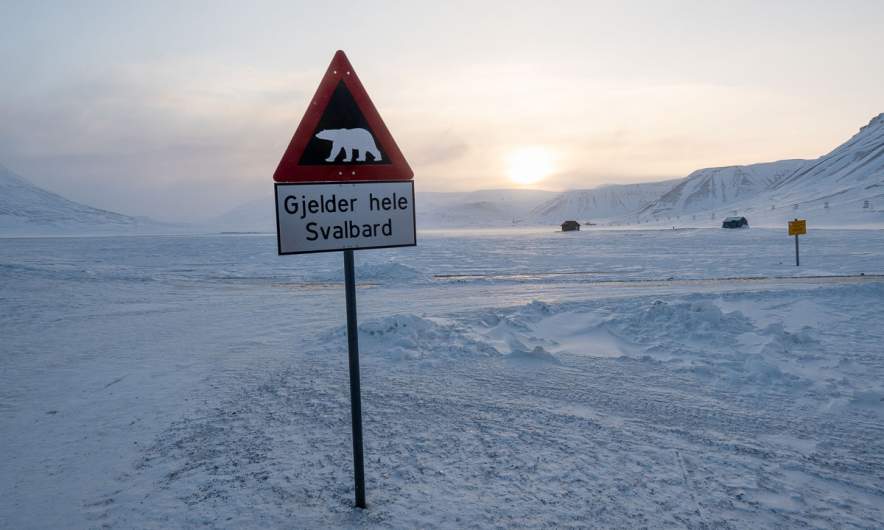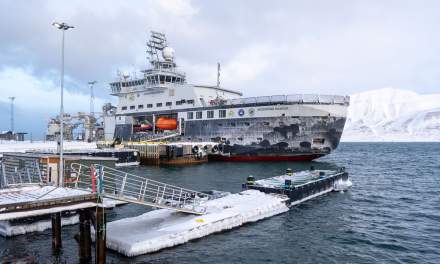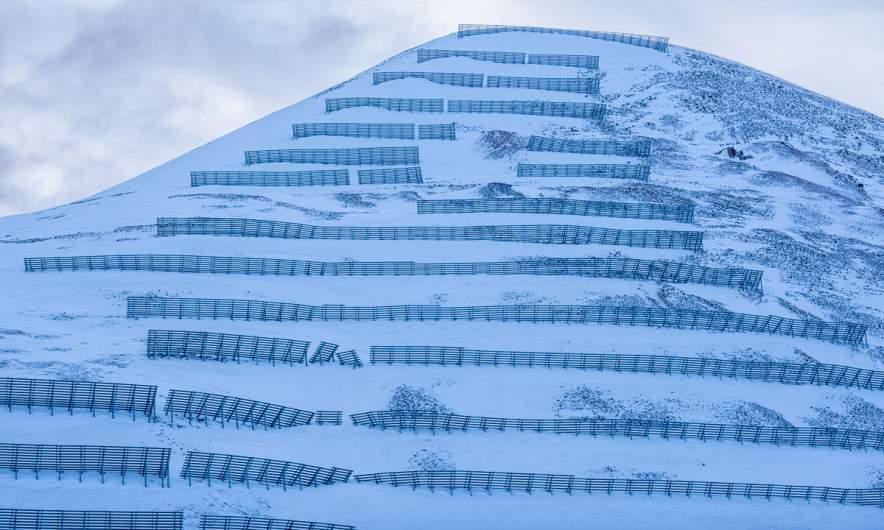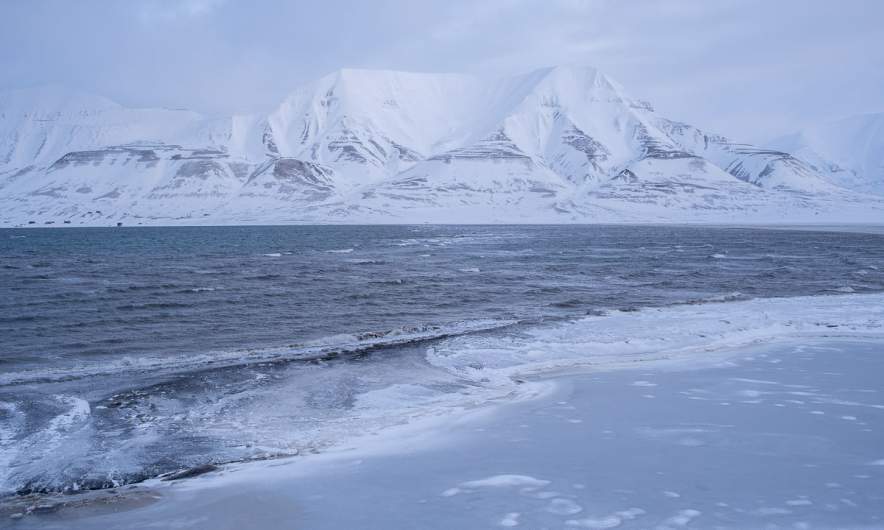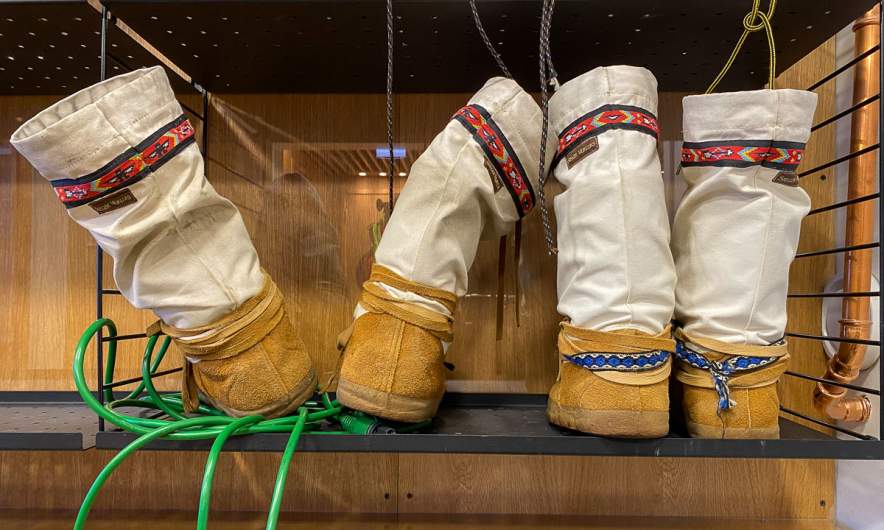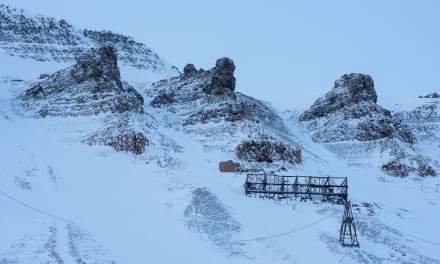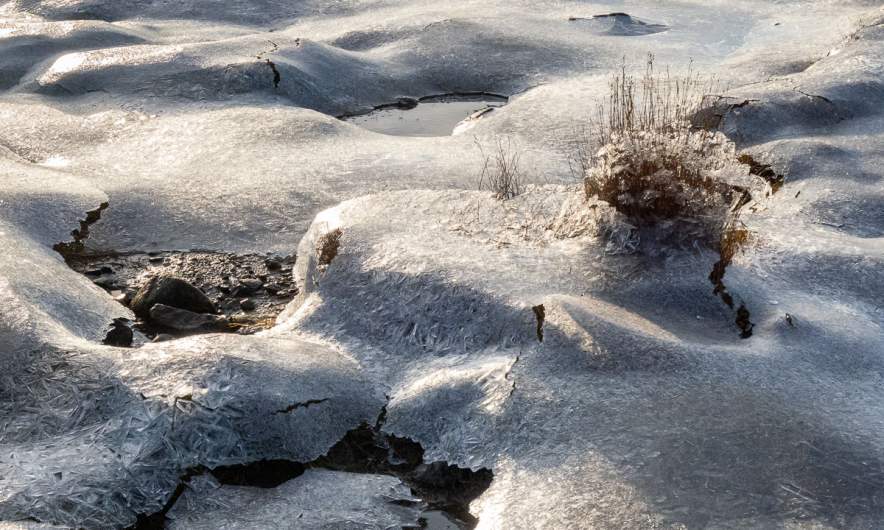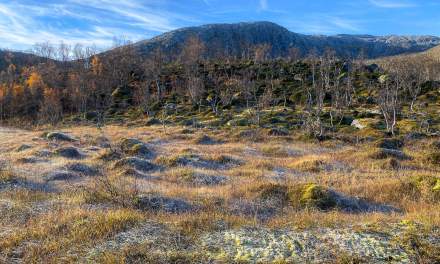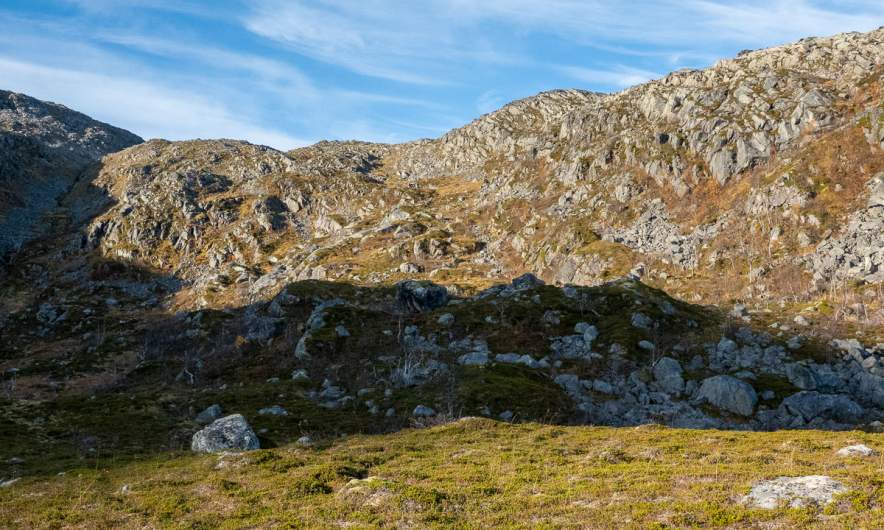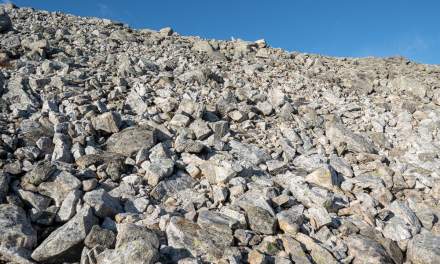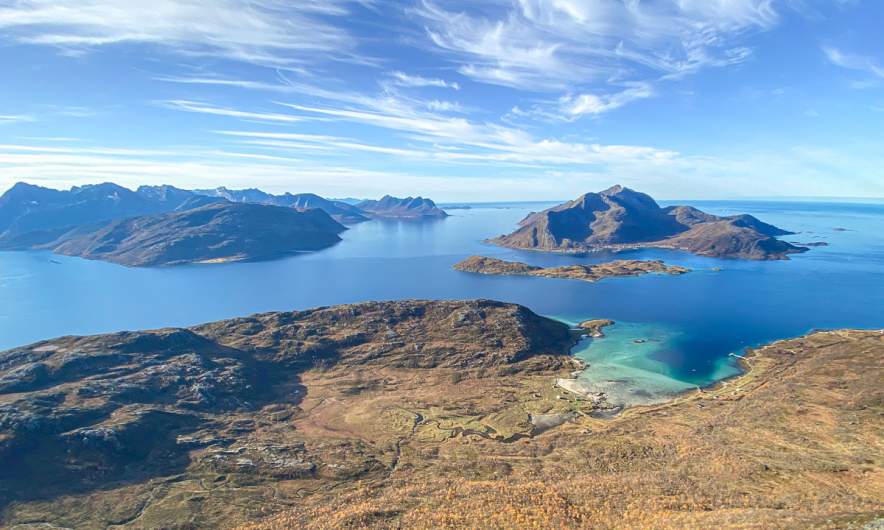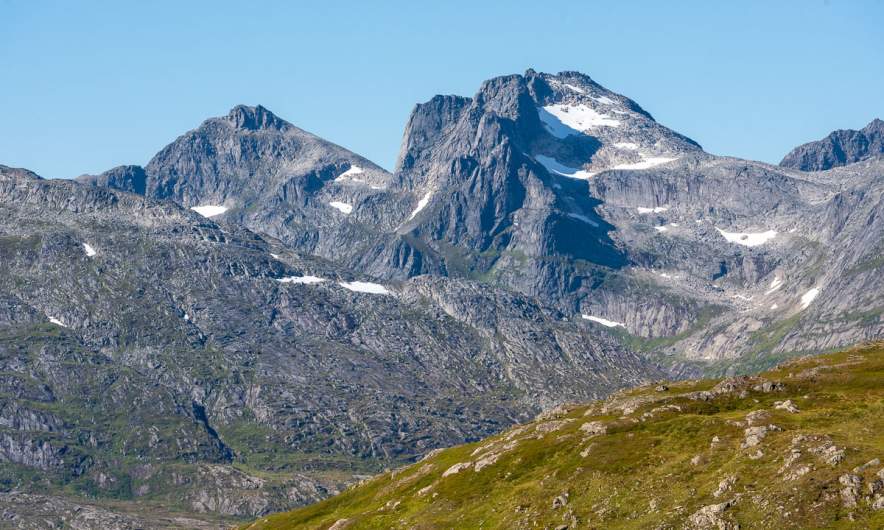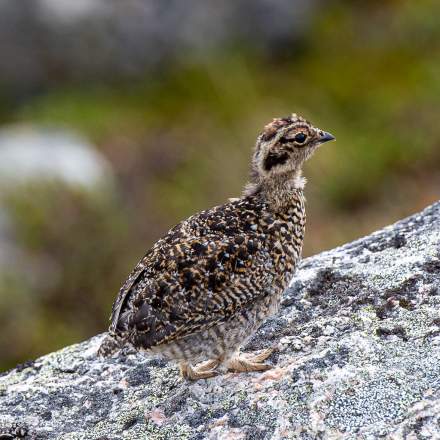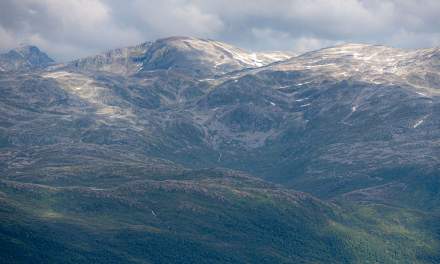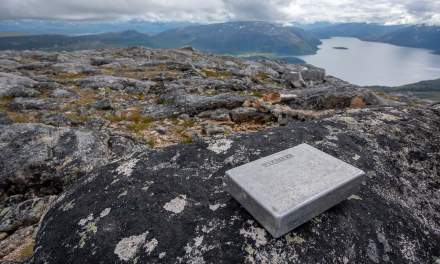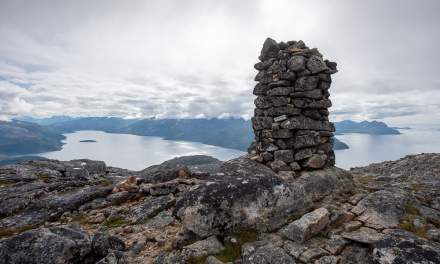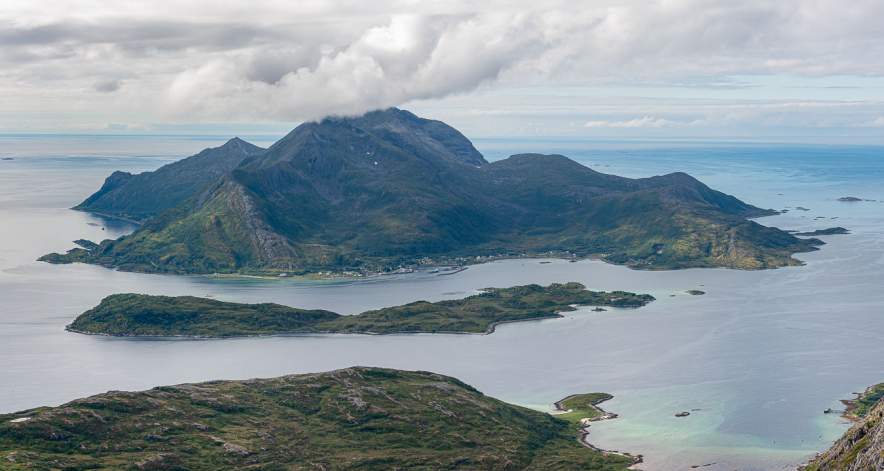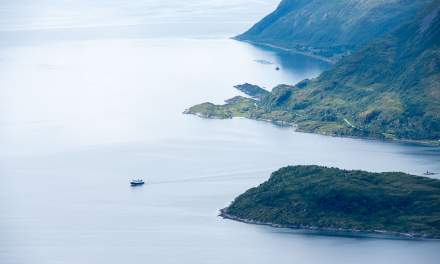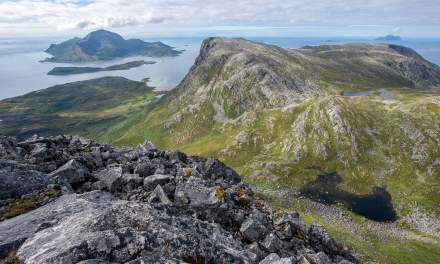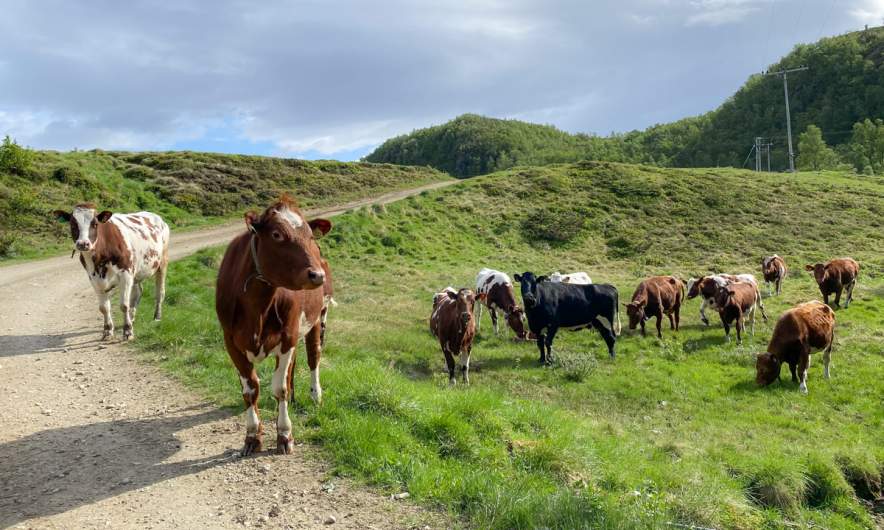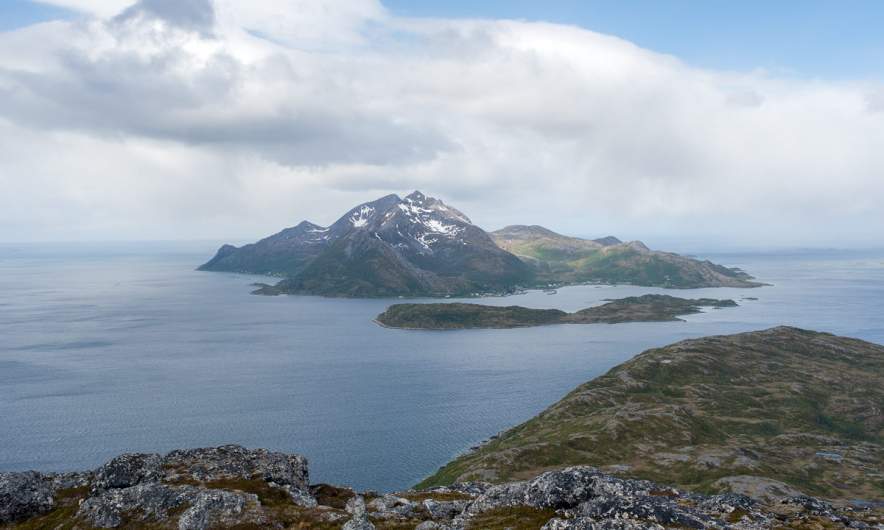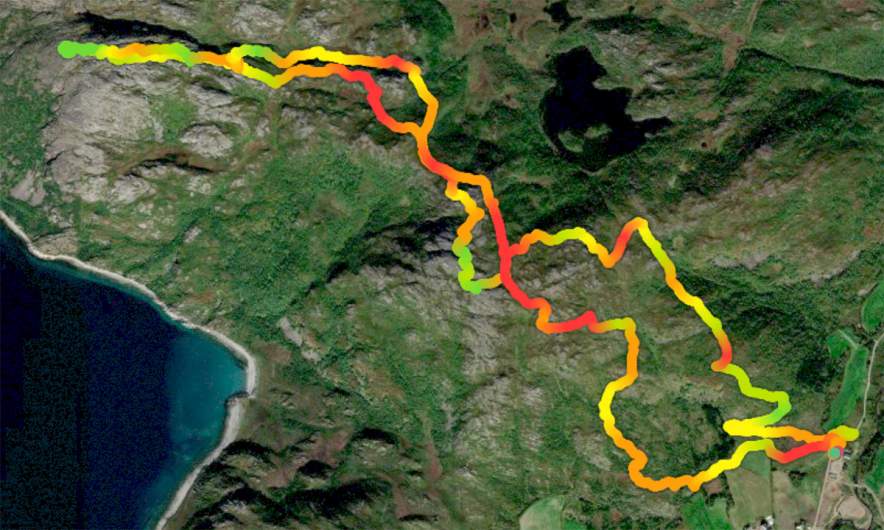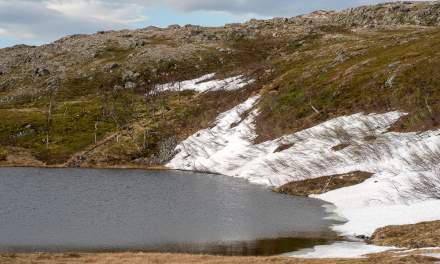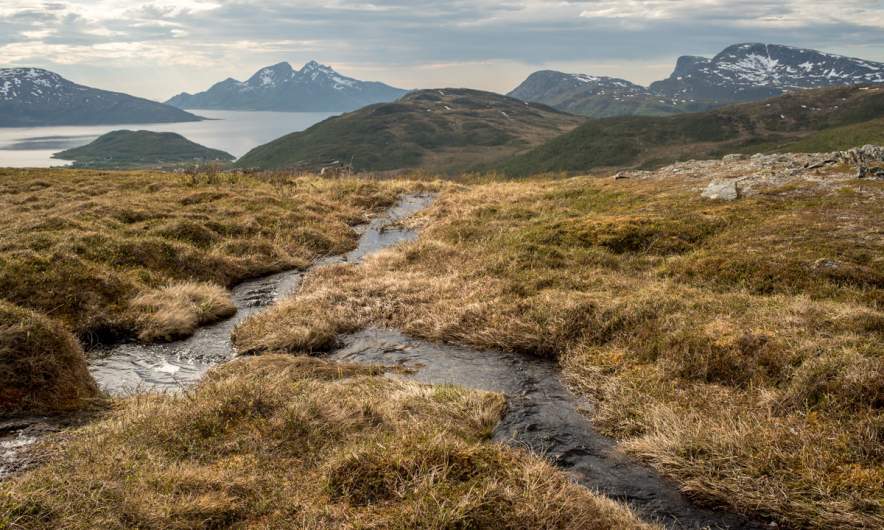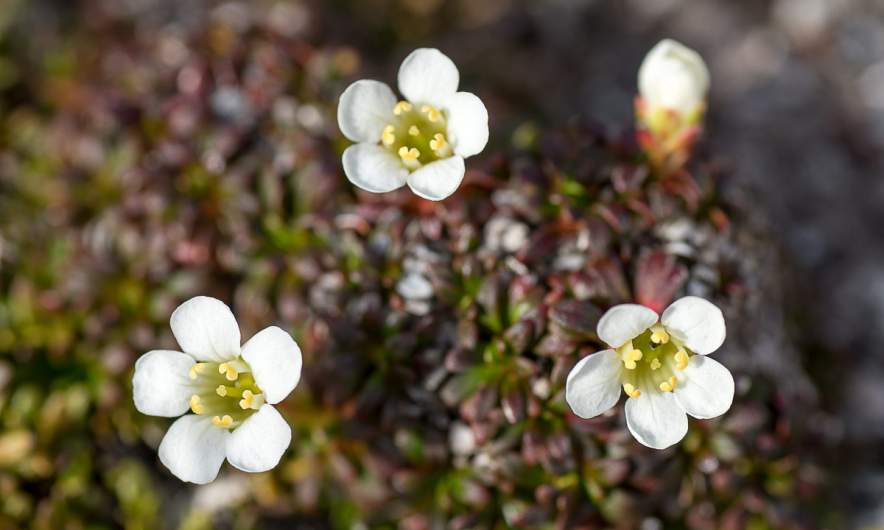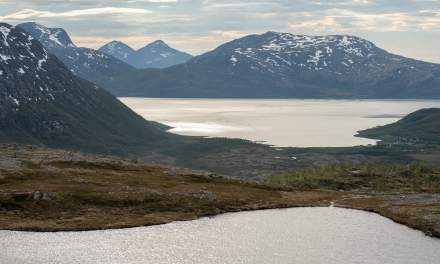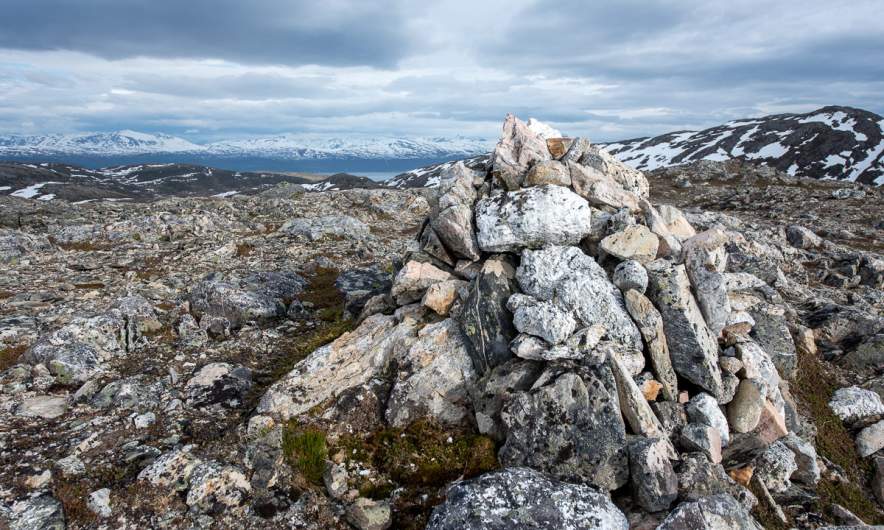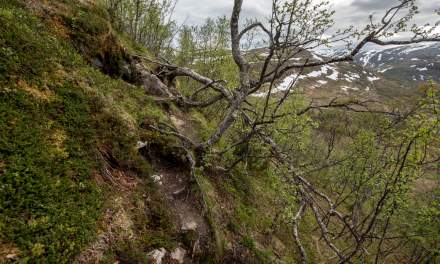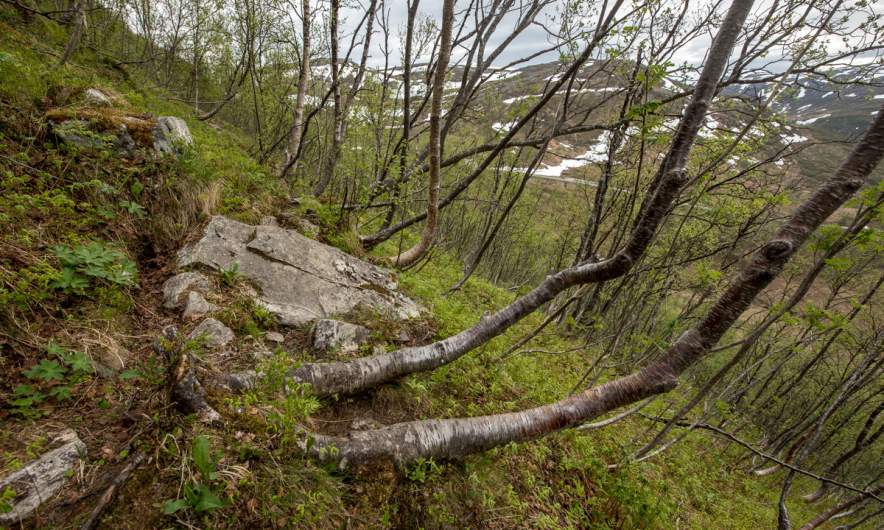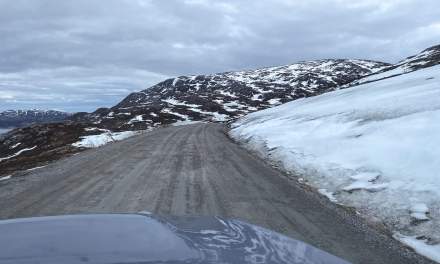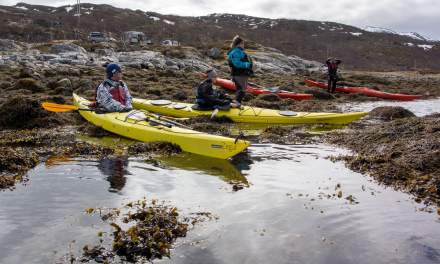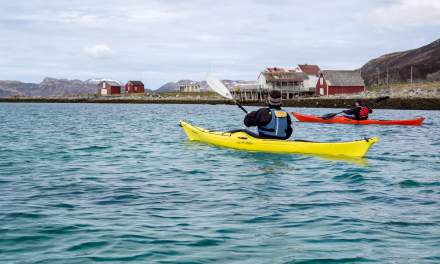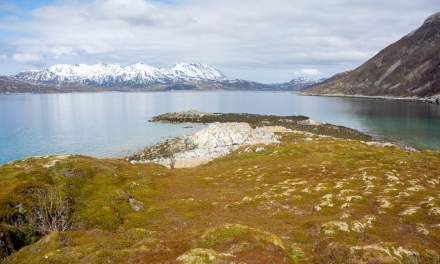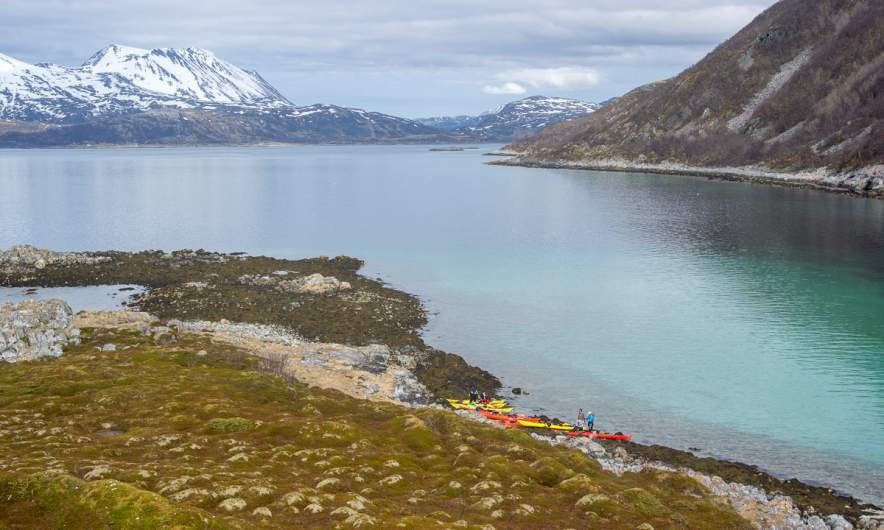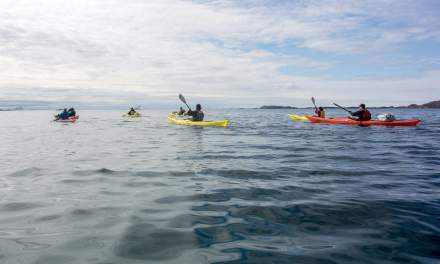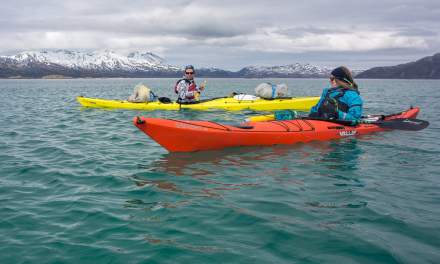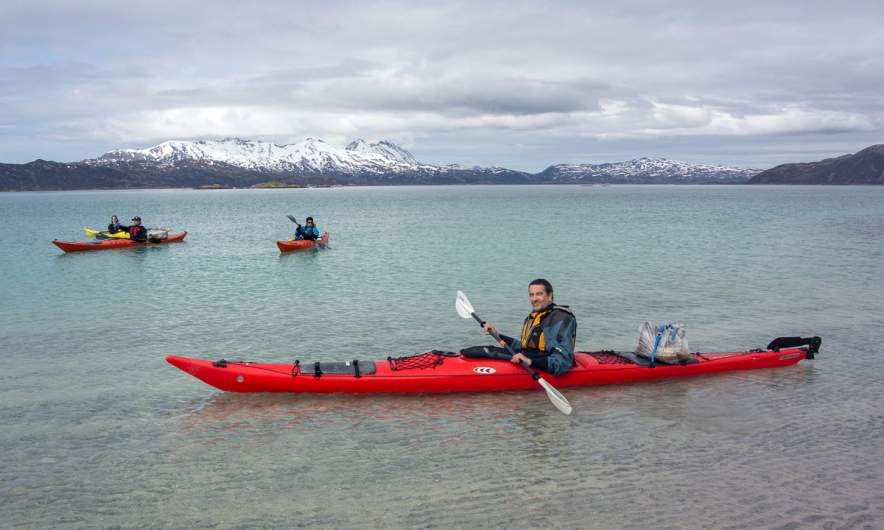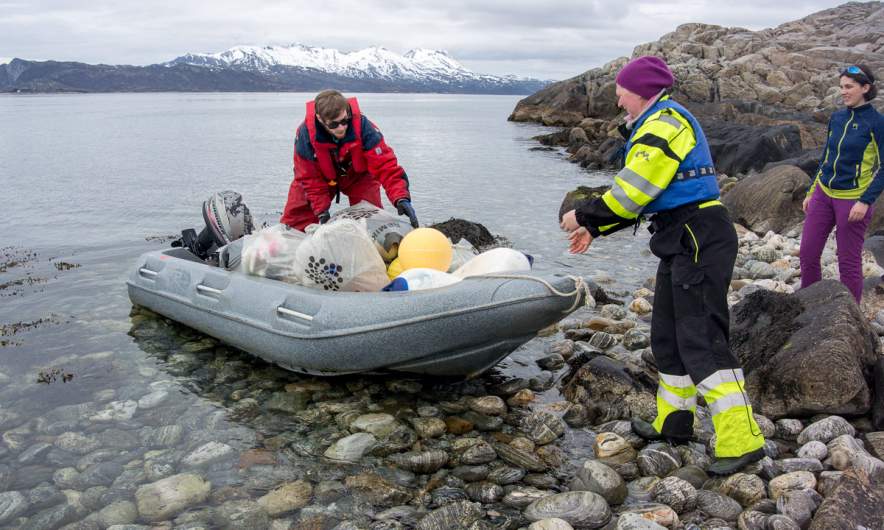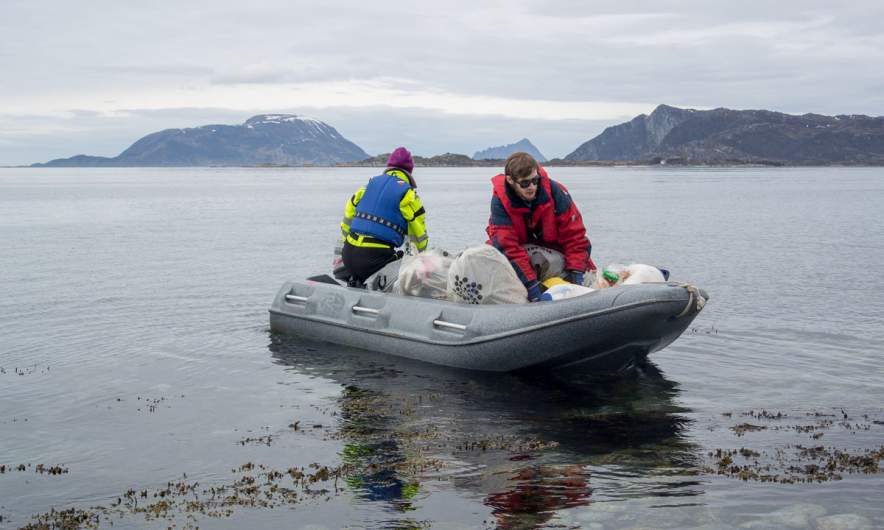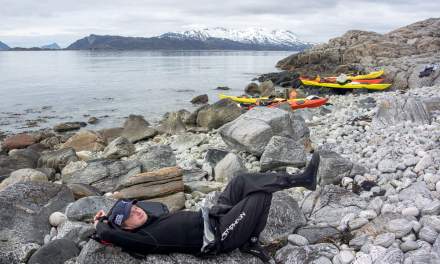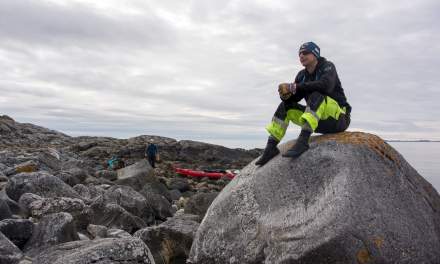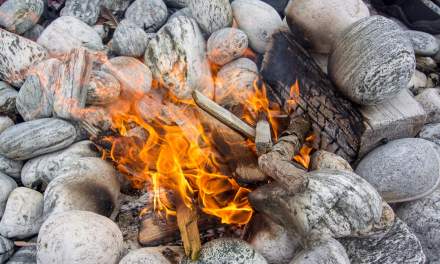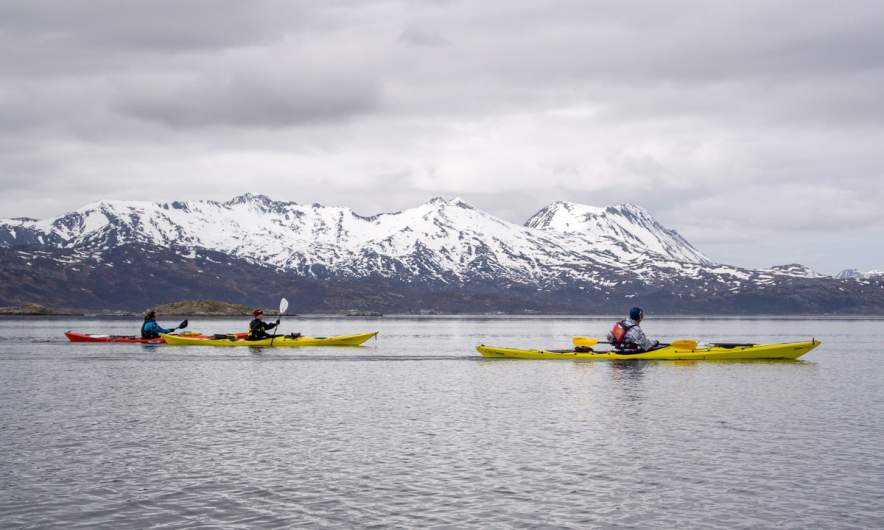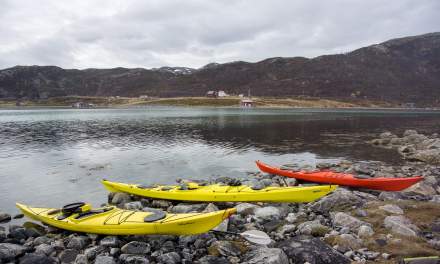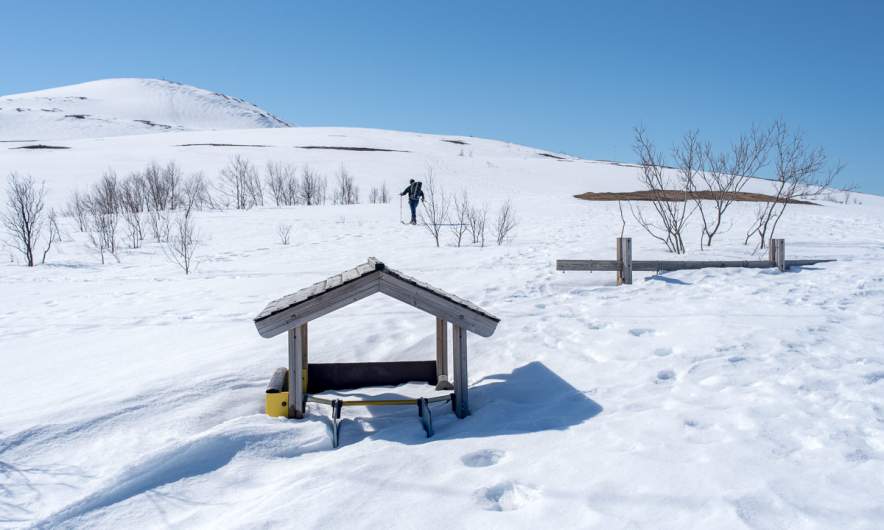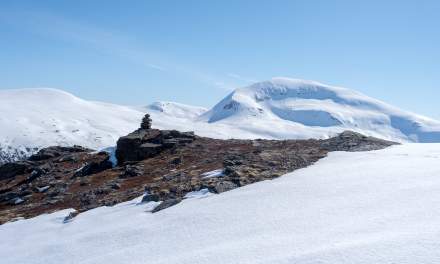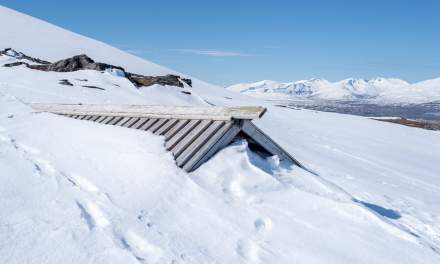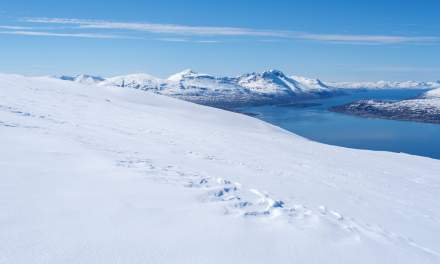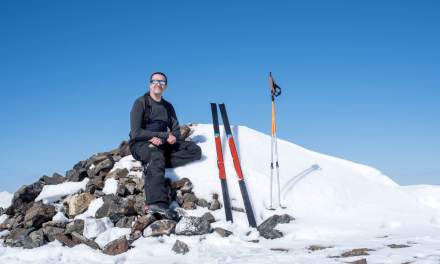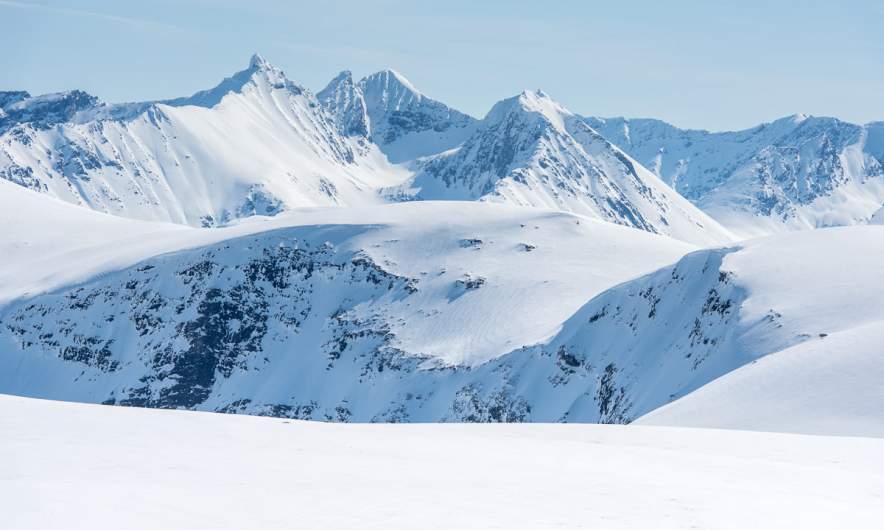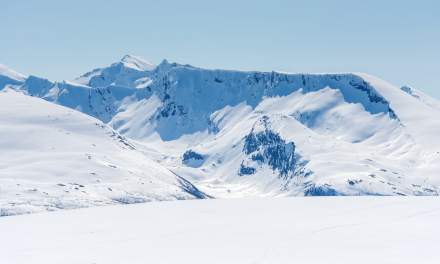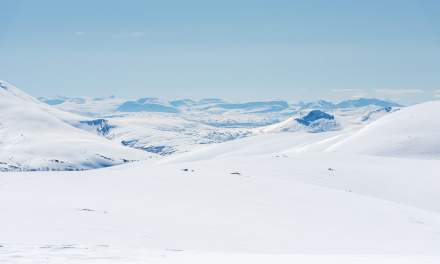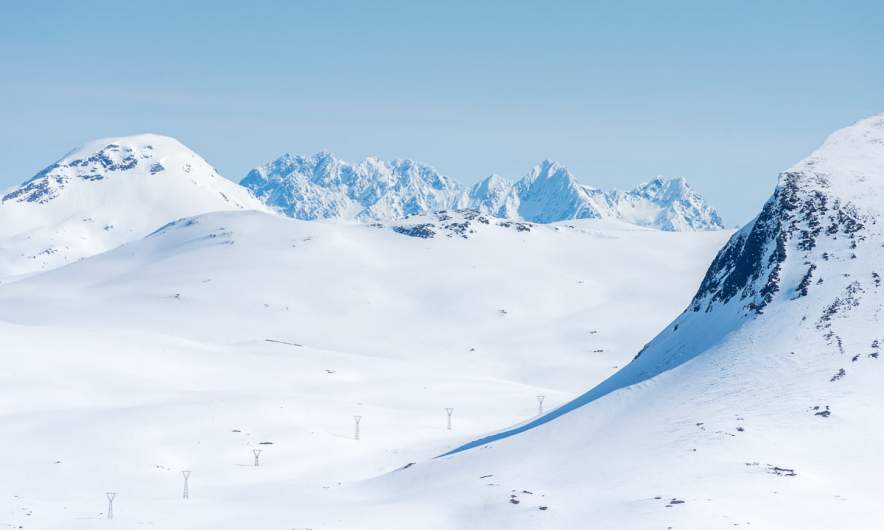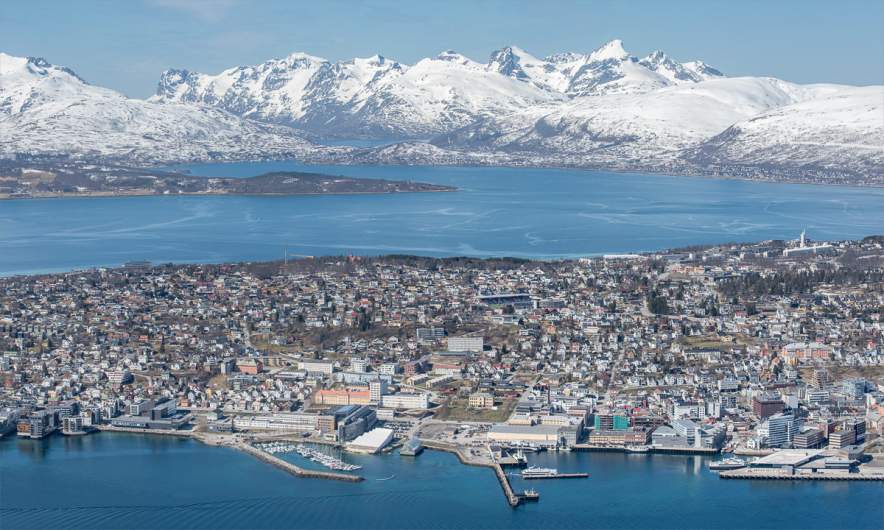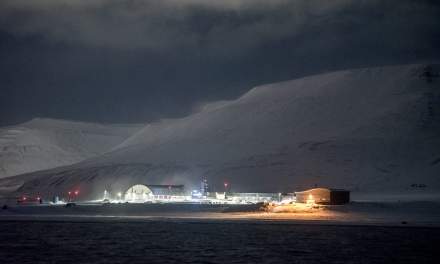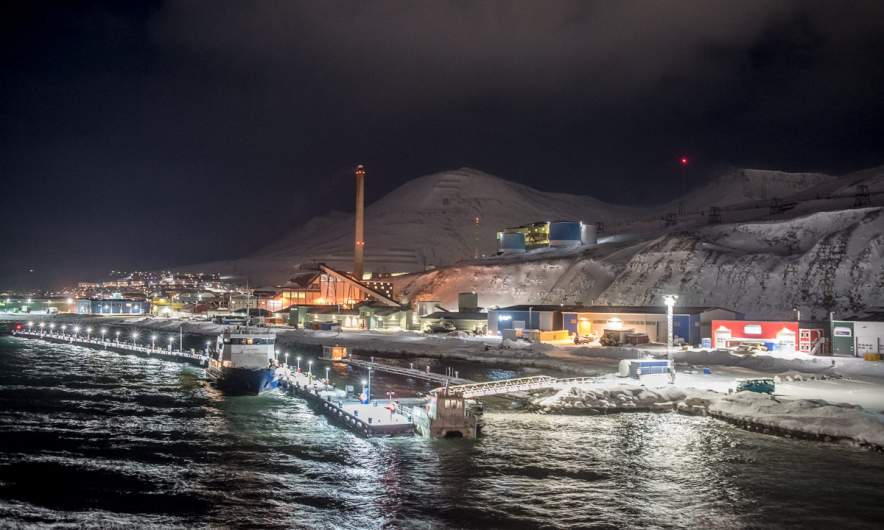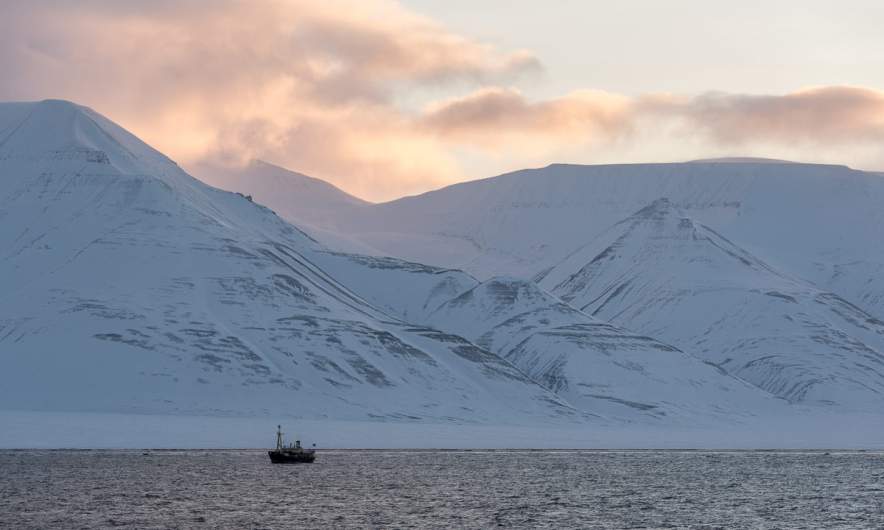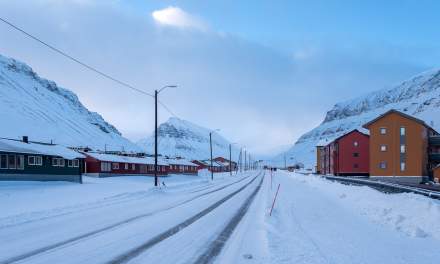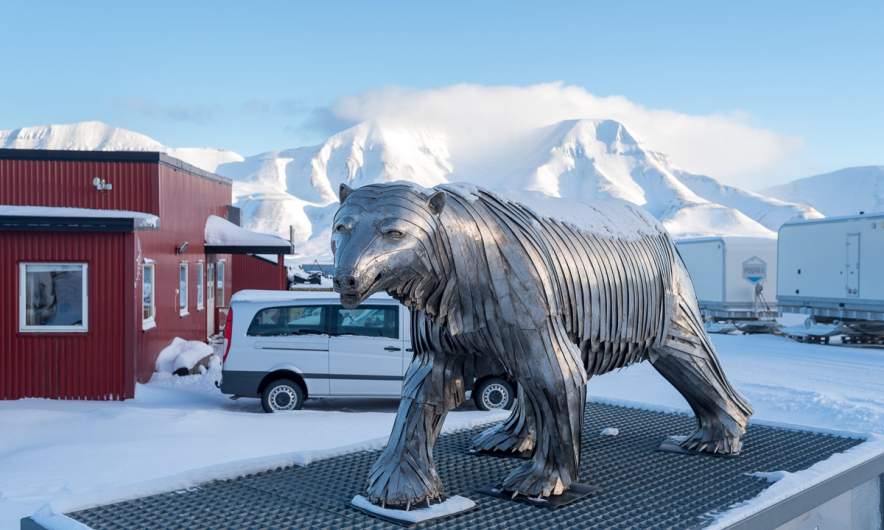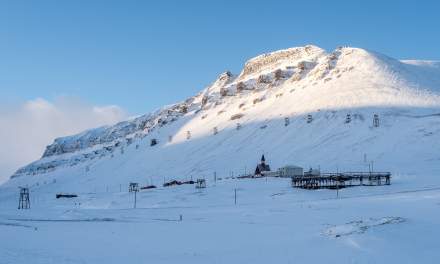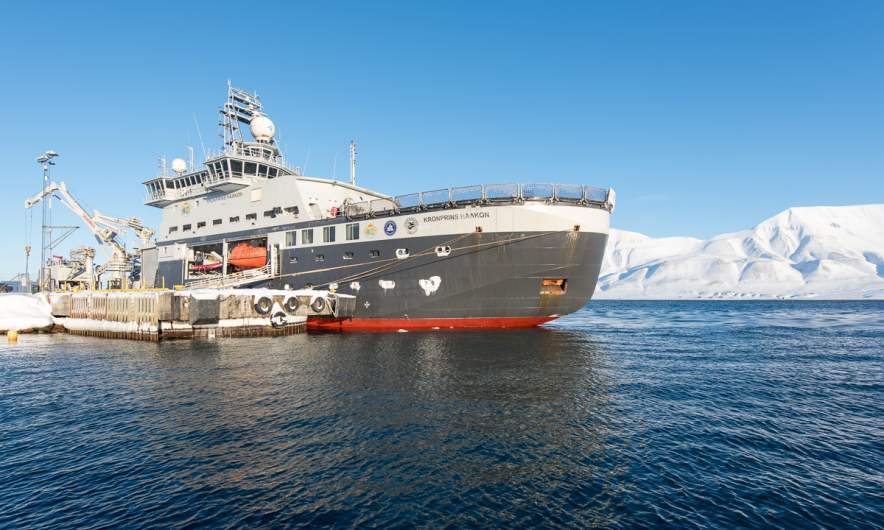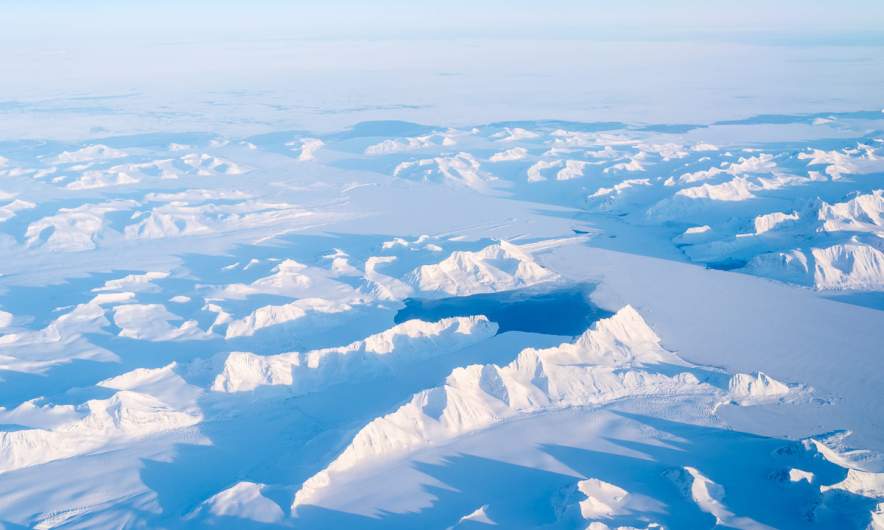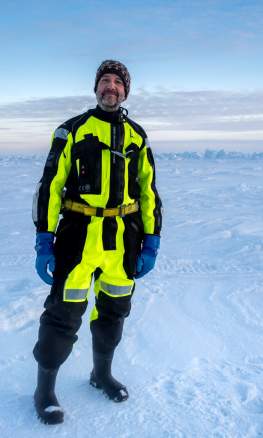… this was the Facebook event I was invited to some weeks ago. It was an event organised by people from TSI Trulle, the other kayak association, but it was open for non-members, too. The idea was to start a kayak tour in Skarsfjord on the island Ringvassøya, paddle to a beach, clean it, cross the fjord to another beach, clean it, too, relax and paddle back. We were eight people joining the tour from five different countries.
Our tour does not start on the water. It starts with carrying kayaks to a trailer, use lashing straps to fix them there, packing all equipment into two cars and some driving.
After 50 km – one hour drive – we arrive at the parking place by the sea, where we unstrap the kayaks and get everything ready including testing the sprayskirts and the footboards. Things you can do on land as well as you see.
It always takes some time to put on the drysuit, check that everything is packed and working but then we all sit in our kayaks and are ready to paddle to our first destination: The islet Teistholmen.
We leave the kayaks there, take a huge rubbish bag each and start combing the shore of the island. Most of the rubbish is on the northwest side of the island that is most exposed to the elements. Mostly it is plastic from fishing. Parts of old green nets, buoys from small to football size and then of course all the civilisation garbage as empty (or half-full) bottles, styrofoam and some nasty stuff. But it’s not extremely much.
After collecting I take a stroll over the green island. Hard to imagine, that I did a ski tour the day before.
After a while and some lunch we continue our triangular tour, now crossing the fjord Skarsfjorden to another beach. You can see the rubbish bags on our kayaks. We were very lucky that there is no mentionable wind, because with side winds the huge bags would act as sails and turn the kayaks into the wind. But without any wind and waves it was easy to cross the fjord.
When we reach the beautiful sandy beach it turns out that this is not the beach to be cleaned. The location that the organiser has in mind is a bit further away. So we continue a bit to arrive at a rocky shore that looked much less inviting than the sandy beach and a bit more difficult to land.
But it looks like that we would collect a lot of more trash here, and so we do. There is a lot of plastic trash, scrap metal (that we left alone) and driftwood for making fires for months. Some of us are collecting large amounts of plastic. It is obviously too much to be transported on our kayaks. But we are lucky and get help by two locals living on an island nearby. They load their whole boat full with our filled rubbish bags to take care of it. You can hear the motor of their boat for a while after they departed. Tusen takk – thousand thanks!
While others have collected more rubbing some of us have started a fire. Time to tell stories, eat a second lunch or just relax.
Anyhow, it is a day trip and so we leave this place, some of us with extra rubbish bags that didn’t make it on the motor boat. We pass the ship wreck, that we already spotted on the way there. It was washed ashore this winter while the captain was asleep because the anchor did not hold. He was not harmed but the ship was totally destroyed.
We are so lucky with the weather! Not much sun, but hardly any wind, no rain and much warmer than the weeks before. We paddle back to the parking place, the cars are visible as a small grey and a small white dot. The water is extremely clear and of a turquoise colour that makes the sea look Caribbean – until you put your hands into the water and realise how cold it is. This is, why drysuits are a must on such tours even under perfect conditions. Safety first!
And then we are back. Some of us train rescue manoeuvres, some of us relax, some collect trash (oh my, here you could collect for days :-( ). Then we put all kayaks back on the trailer, drive back to the boat house where we put all kayaks back in the boat houses. Then we are ready to leave.
Thank you guys for inviting me, letting joining me and having a great day together. Hopefully I meet some of you again. Would be a pleasure!
